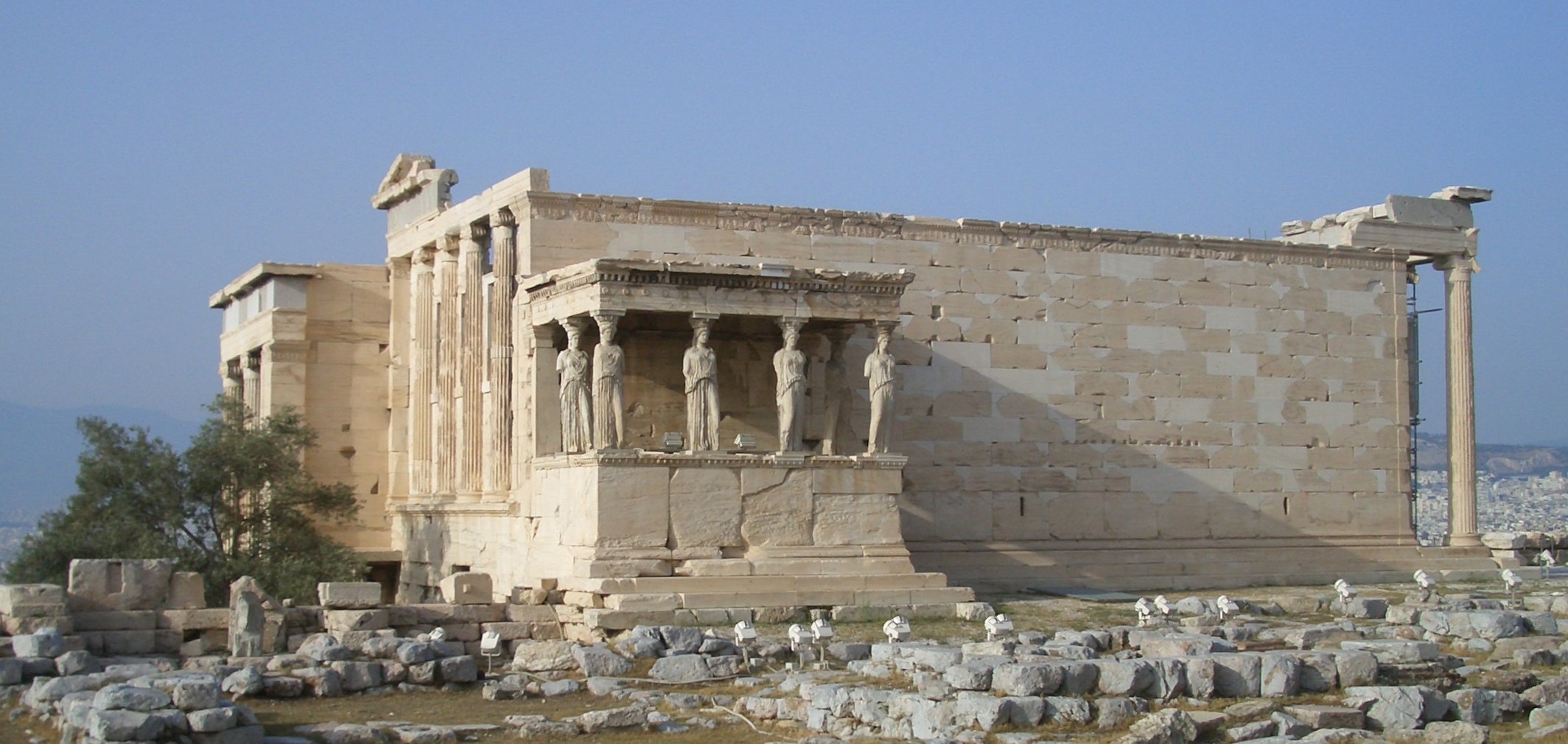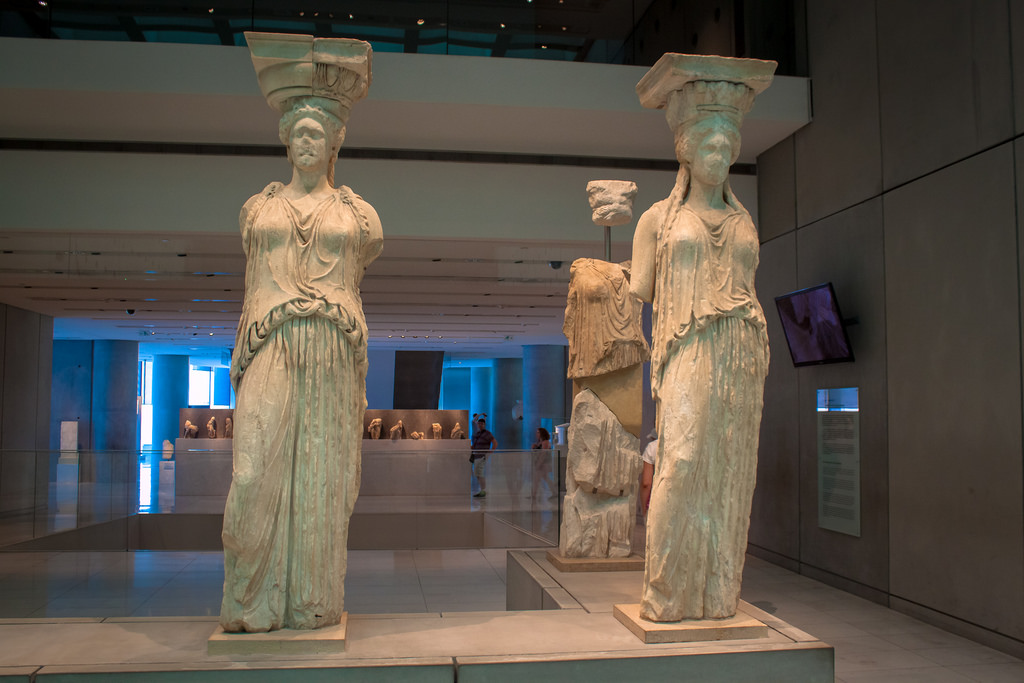The Erechtheion
History
 Named after Erechtheus, king of Athens and foster son of Athena, the Erechtheion was constructed between 421 and 406 B.C and served as a temple to Athena and Poseidon and the cult gods Hephaistos and the hero Boutes. It is a temple of ionic order that rests on what is considered to be the most sacred area on the Acropolis with unique features such as a coffered ceiling, grand doorway, and caryatids, or stone carvings of draped female figures used as pillars for architectural support. The building had two porches, each supported by 6 columns, with the floor beneath the north porch marking the place of the thunderbolt sent by Zeus to kill King Erechteus and the floor beneath the south porch being home to the grave King Kekrops. During the first century, the Erechtheion suffered damage from Roman general Sulla’s siege of Athens but was later repaired and transformed into a Byzantine church, a palace for Frankish bishops, and a dwelling for the harem of the Turkish garrison commander throughout the subsequent centuries.
Named after Erechtheus, king of Athens and foster son of Athena, the Erechtheion was constructed between 421 and 406 B.C and served as a temple to Athena and Poseidon and the cult gods Hephaistos and the hero Boutes. It is a temple of ionic order that rests on what is considered to be the most sacred area on the Acropolis with unique features such as a coffered ceiling, grand doorway, and caryatids, or stone carvings of draped female figures used as pillars for architectural support. The building had two porches, each supported by 6 columns, with the floor beneath the north porch marking the place of the thunderbolt sent by Zeus to kill King Erechteus and the floor beneath the south porch being home to the grave King Kekrops. During the first century, the Erechtheion suffered damage from Roman general Sulla’s siege of Athens but was later repaired and transformed into a Byzantine church, a palace for Frankish bishops, and a dwelling for the harem of the Turkish garrison commander throughout the subsequent centuries.
Reconstruction
The Erechtheion was the first monument addressed by the ESMA in the early 20th century under the direction of county-engineer Nikolaos Balanos. His methods to preserve the ancient building included the use of iron for reinforcement, cutting and removing ancient stones, and placing random fragments to fill in and restore missing sections. Due to these techniques and repeated casting of the building, much of the original appearance is lost. However, in the years 1979-1987, new restoration efforts proved to be successful. Workers created systems of bridge cranes on elevated rails to safely transport new materials as well as using the ancient tactic of katrakylia, or the transferring of loads on rollers. They dismantled and replaced over a dozen blocks in the north and south wall to retain its shape in a safer way. Missing architectural members were solved by artificial stones made by casting and natural stones identical to the ones used during the initial construction. Another important feature of the Erechtheion is that it was the first monument in the history of architecture conservation to utilize titanium clamps. It joined the fragments of the original members with occasionally the new marble fillings. This process was implemented in efforts to correct the work of Balanos, since technology had advanced significantly and safer, better methods of preservation came into view.The most notable feature of the Erechtheion comes from the south porch where six statues of maidens, or Caryatids and also known as Korai, are supporting the ceiling instead of typical columns. Five out of the six were removed from their positions to the Acropolis Museum in 1978, while the last one was removed earlier by Lord Elgin to the British Museum in 1816. Their restoration methods included structural fixtures, securing unstable fragments, and cleaning layers of pollutants using laser technology. Today, casts of these monumental figures can be seen holding up the famous porch. The building was entirely completed and restored in the year 1987.

